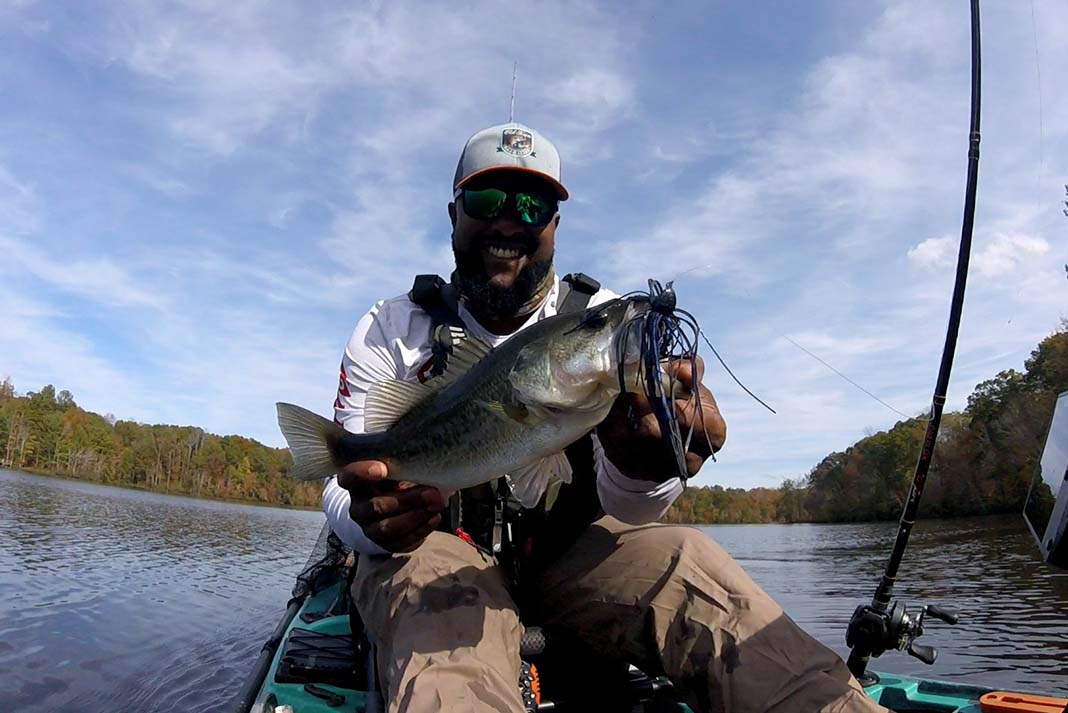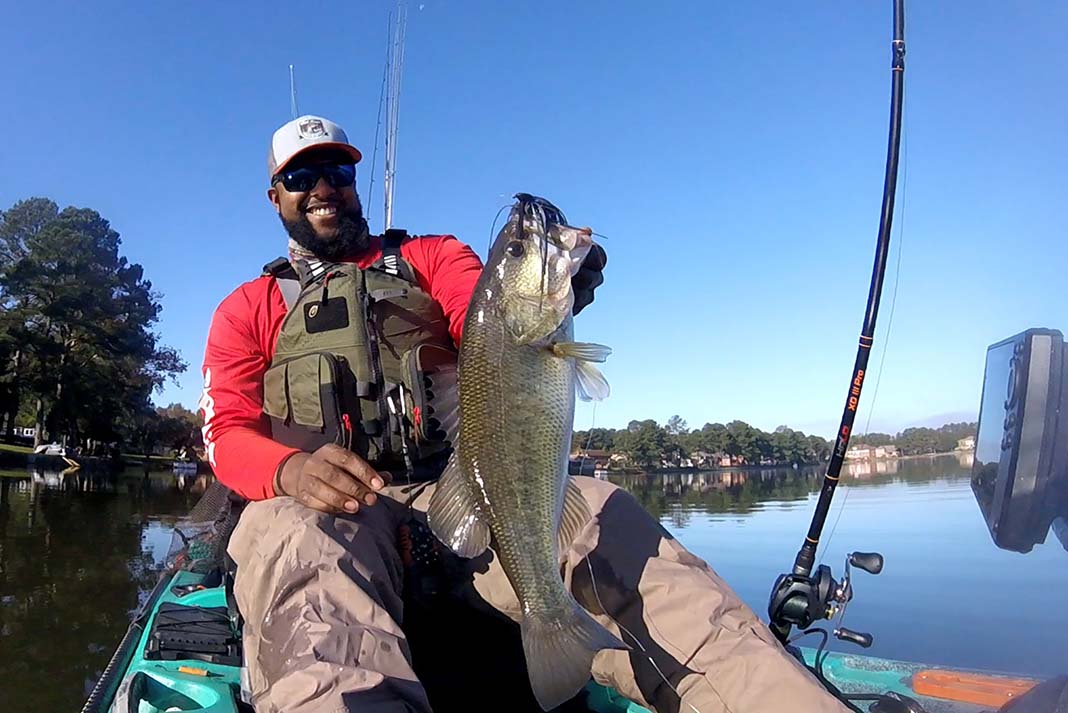Products You May Like
Originally from San Antonio, Texas, Old Town pro Roland “Tex” Butler brought his big-fish knowledge to Virginia. Over the past couple years, Butler has been on a tear in the meet-up and online tournament scene. “When I was 15, I learned how versatile bass jigs are,” Butler says.
Best Bass Fishing Baits and Lures: Jigs
Consisting of a lead-head and hook with a rubber tail and skirt or trailer, a jig is designed to work the bottom imitating a crawfish or baitfish. Butler uses ounce-and-a-half lures to punch through cover and tiny, half-dollar size finesse jigs to entice lock-lip bass to bite. He relies on these lures for one reason: “A jig consistently catches big fish.”
When to Use a Bass Jig
My favorite time to fish a jig is late fall and winter. I like to work the lure around hard structure, especially rocks, which hold heat better than the surrounding bottom. I like to use a jig in cold water because I can work it slowly across the bottom to imitate a crawfish. Big bass look at a jig as a high protein meal requiring little effort to eat.
Jigs work in any conditions, but I prefer some cloud cover. On a sunny day, I think bass search for food above their head and in front of their face. When it’s cloudy, fish are more likely to search the bottom for a meal.
How to Choose a Jig
I choose jig size depending on water depth. I try to use the heaviest jig that’s appropriate, because a heavier jig helps me feel the bottom and the bite. In three to six feet of water, I go with a 1/4- to 3/8-ounce jig. Over six feet deep, I will go up to 3/8- 1/2-ounce. Deeper water calls for 3/4- to 5/8-ounce lure.
I base color choice on local bait and water clarity. If I catch a bass with a crawfish in its mouth, I’ll match my jig to the color of the fish’s last meal. Cleaner water calls for brown or green pumpkin with orange or purple. When the water is cloudy, I go to blue or black and purple.
How to Use a Bass Jig
I cast the jig to the structure and let it sink. Before I start the retrieve, I give the jig a shake with my rod tip. Many times, a bass will see the jig sink and follow it to the bottom. A little shake might entice the fish to bite. Then I drag the jig along the bottom.
In cold water, I don’t hop my jig. Predators are looking for an opportunity to feed, so I work the jig along the bottom feeling it bump the rocks. Cold bass bite lightly.
Sometimes I feel a bump or the line will go slack as the bass picks up the lure. That’s when I swing for the fences. I learned over the years that setting the hook is free. Better to strike thin air than miss a light-biting fish.
I took Kayak Angler editor, Ric Burnley bass fishing. Ric is a saltwater angler, where he hops jigs for trout and reds. For bass, I drag my jig along the bottom. We fished all day. Burnley only caught a couple small bass while I had several trophies. The key to using a jig is focusing on speed and subtle action and then being able to detect a light bite.

Jig Tackle Box
Rod: 7’2” to 7’4” medium-heavy baitcasting rod with a fast tip to absorb the shock when a bass thrashes. The fish can use the weight of the jig to throw the hook.
Reel: 8.5:1 Shimano Curado XG
Line: 30-pound Power Pro braided line tied to a 20-pound monofilament leader.
To a bass, a jig looks like an easy meal. | Feature photo: Roland Butler
